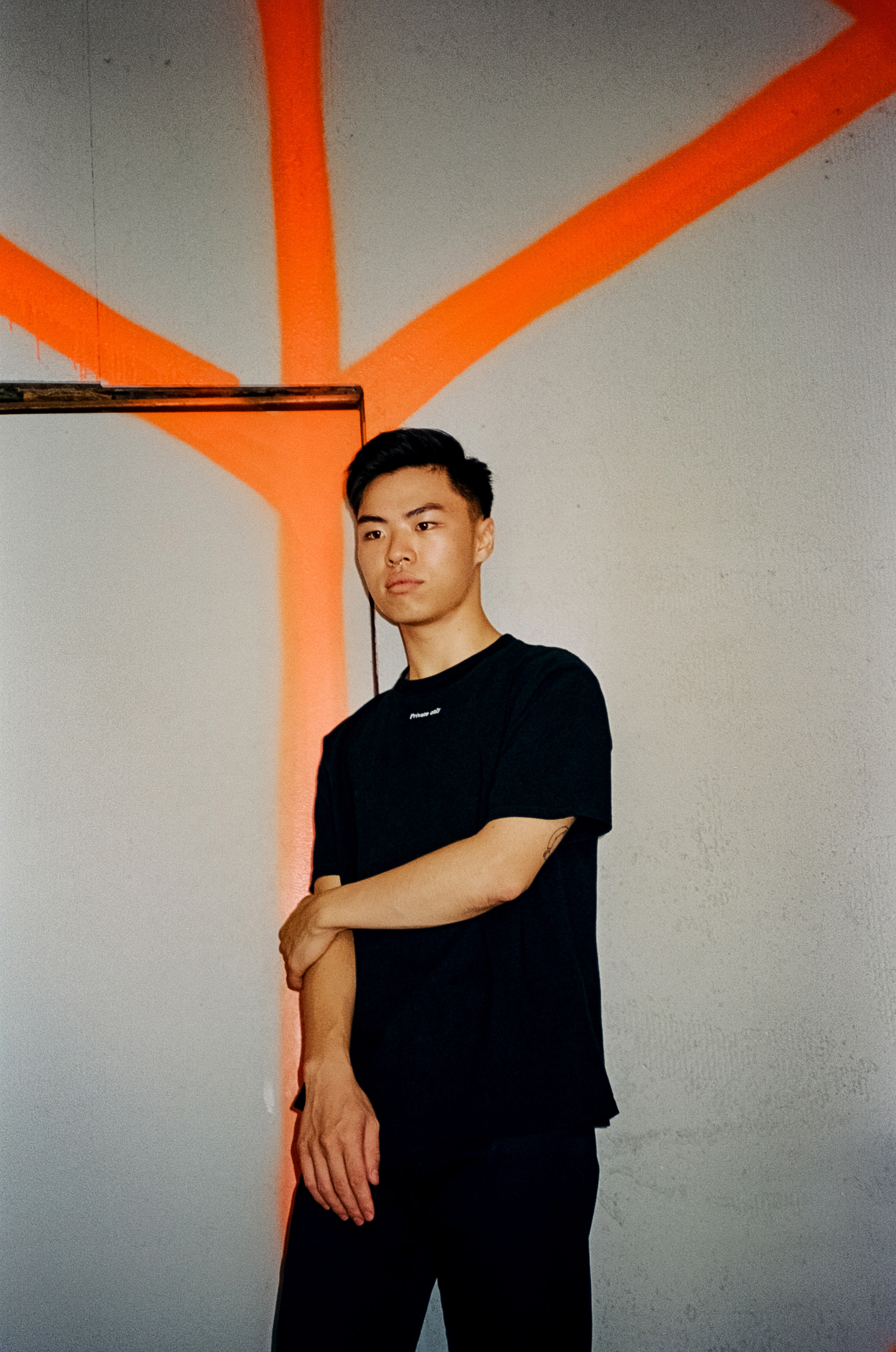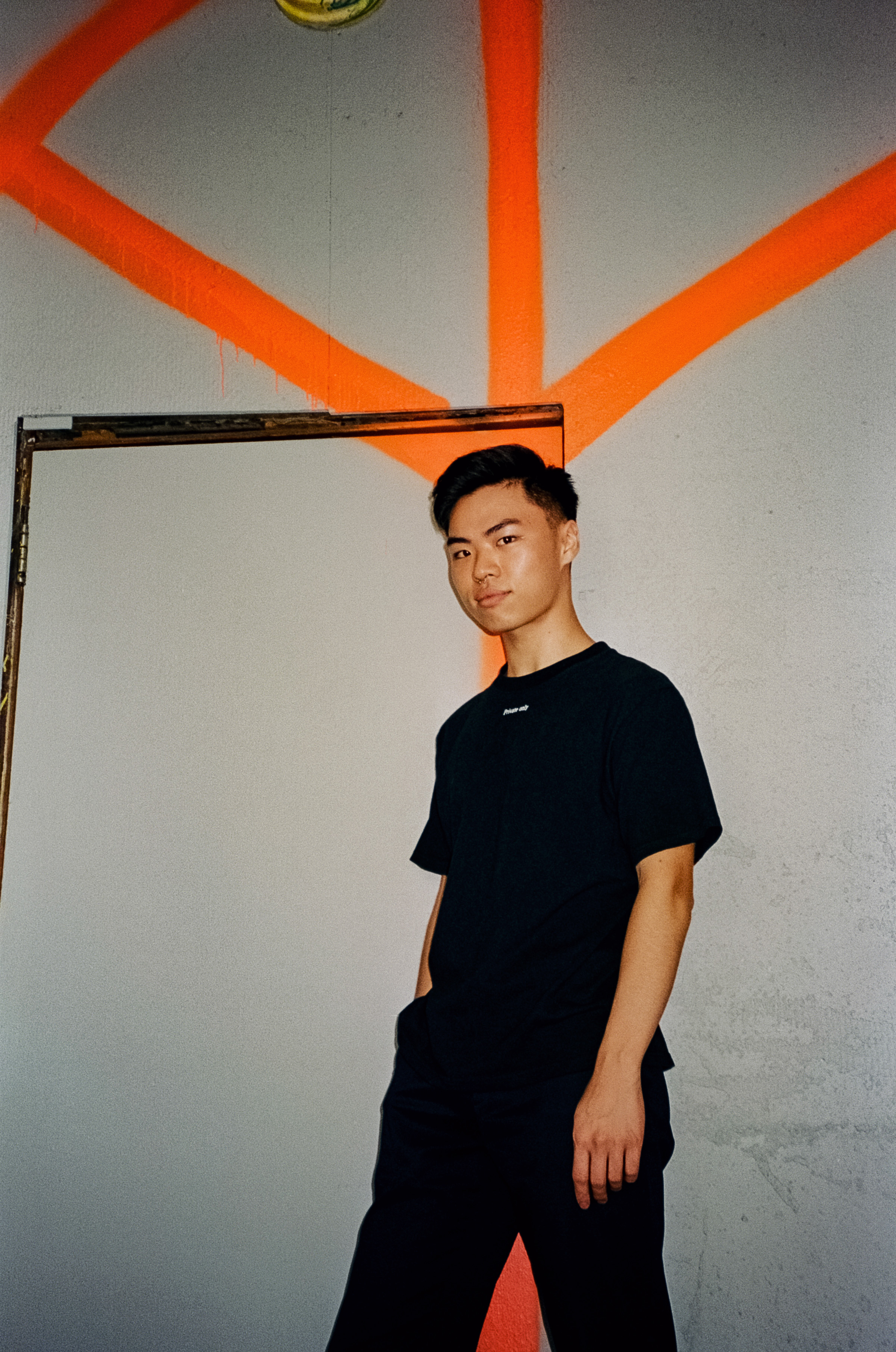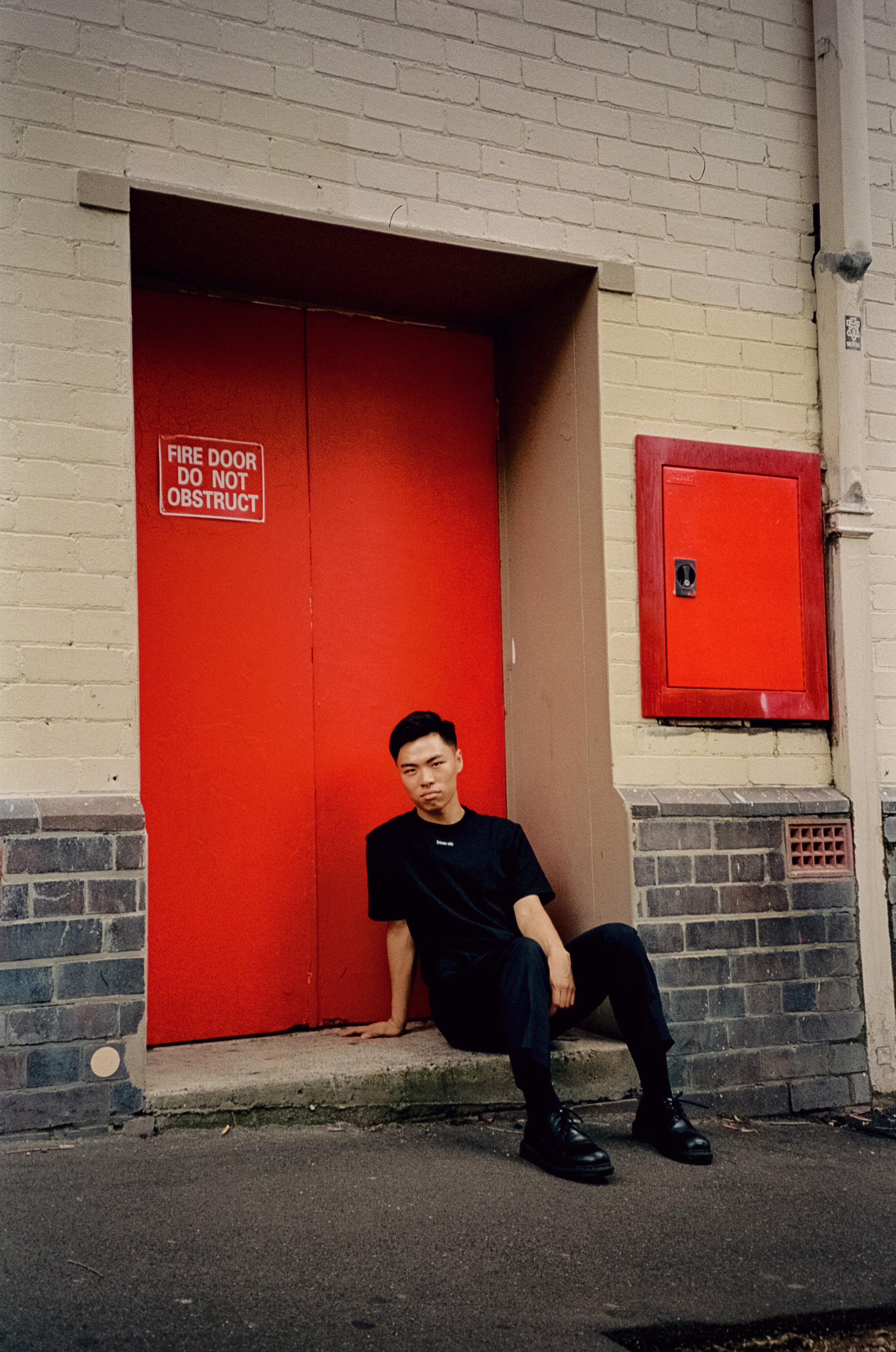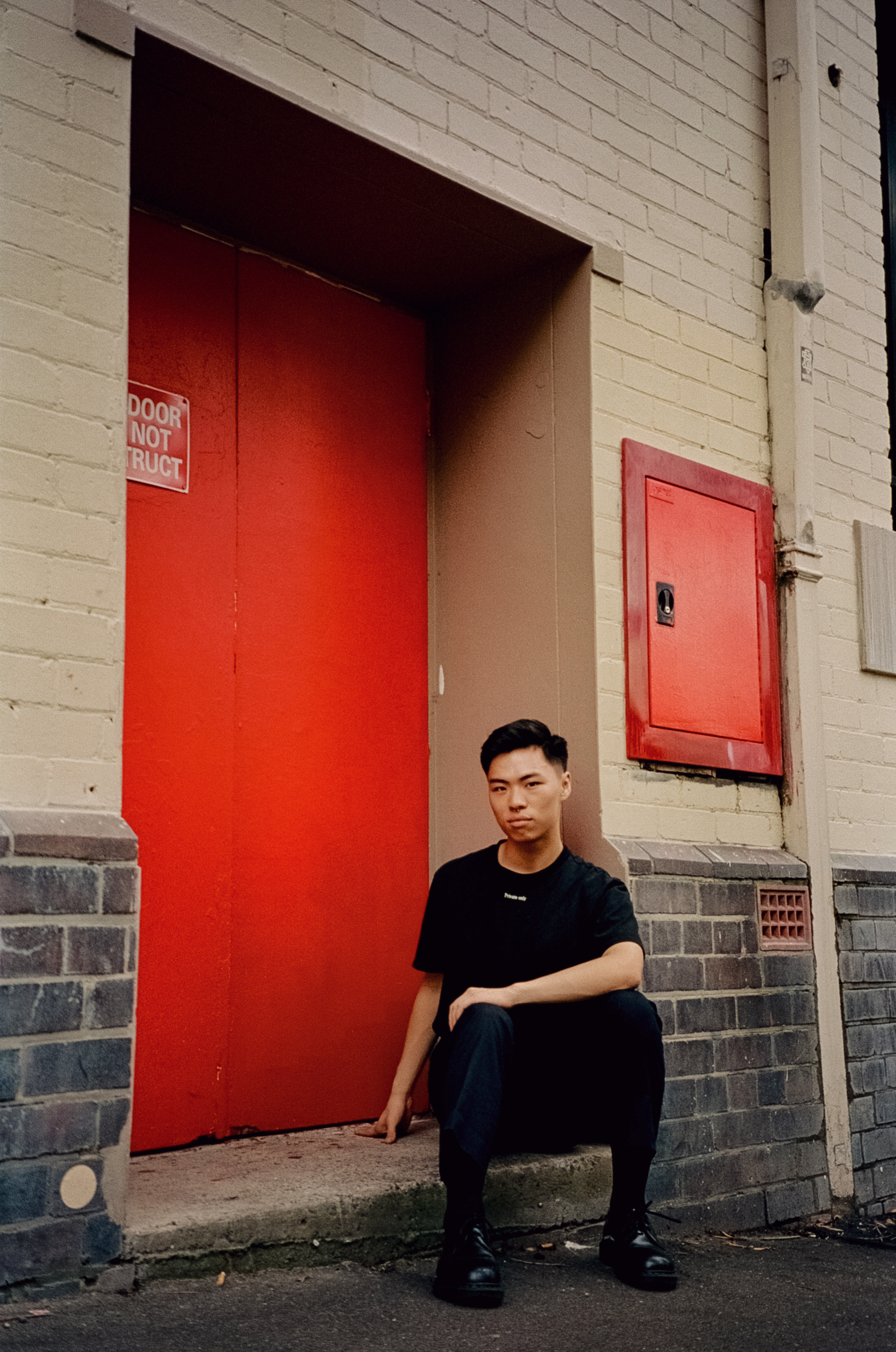Interview #98 — Wilson Leung
by Louisa Luong
Wilson Leung is a graduate graphic designer from Sydney who likes to push the envelope. He is intensely curious and passionate about creating with purpose, often using design to explore and enquire about facets of his culture and identity.
In his interactive project pleasewatchyourtone.xyz, Wilson designed a typeface called Jyut Sans to visually represent the complex tonalities of Cantonese with a splash of fun.
Wilson speaks to Louisa about his Honours project, reconnecting with his lingual roots and the evolution of Chinese-Australian Cantonese.
Can you tell me about your project Please Watch Your Tone (PWYT)?
PWYT aims to critique the way graphic design has traditionally represented Chinese identities. I specifically looked at fonts that have been designed to represent identities, language and culture—that’s the elevator pitch. For me, it was an activity of reconnection to my language and heritage. And not only that, but to advocate for a distinction between the diversity and complexity of Chinese languages. There are so many different dialects within the Sinitic language family and I thought it was important to educate people on this—to distinguish between Cantonese, Mandarin, Shanghainese, Hokkien.
As a body of work, it’s very fun and playful and I feel like that’s your personality and your approach from what I’ve seen from your previous designs. Do you feel like this project was representative of you coming into full bloom?
It definitely felt like a culmination of all my design aesthetic and all the different ideas that I’ve been exploring throughout my whole degree. Every project that I’ve done has linked back to my heritage and culture in the last three years of design. It just made sense for my Honours project to delve into who I was; both culturally and linguistically. It was really cathartic and therapeutic to design, make and finish.
On your website, you mention the exploration of the ‘ethicality of Asian mimicry typefaces’. Can you talk me through that?
When you go to the Blue Mountains and you see that one Chinese restaurant that has those chopsticks fonts written on the outside, that’s the Asian mimicry typeface I’m talking about.
This one-dimensional representation of language and culture is embodied in this form that strips away all nuances of tonality, pronunciation and lexical complexity. And then these mimicry fonts imitate the aesthetics of East Asian script, which is such a flat and impoverished way of showing what a language is.
The East Asian aesthetic has always captured the minds of the West and used quite often to sell this idea of Otherness. How damaging do you think this is?
I think it’s more damaging for people who aren’t East Asian because visual culture is such an accessible and consumable way of learning, so when you’re constantly bombarded with all these ‘images’ of Asian-ness and Chinese-ness, you’re getting a false image. It’s this false image that I was trying to challenge.
What made you want to pursue this exploration of culture and identity through the particular medium of typeface and a choose-your-own-adventure website?
With the typeface, I wanted to design an alternative for the existing status quo, to break that cycle of visual culture and inject something new. I made the website so it could be more interactive and inclusive; being able to hear the sounds, click on the individual words, I thought that was important to the educative aspect and purpose of my project. Without hearing the sentence and the six changing tones, it’s hard to make sense of it if you’ve never grown up speaking Cantonese and have no frame of reference.
I wanted to film a Cantonese interview because I wanted people to hear about the lived experiences of Chinese-Australians who speak Cantonese, but also what it sounds like in conversation. The flashcards and the book were complementary pieces to the typeface and the website, just extra information and detail about Cantonese: where it comes from, where it sits in the Sinitic family tree, where Cantonese is spoken in different parts of China, how phrases are used on a daily basis.
When you go to the Blue Mountains and you see that one Chinese restaurant that has those chopsticks fonts written on the outside, that’s the Asian mimicry typeface I’m talking about.
Who did you make Jyut Sans and PWYT for?
I made it to provide an access point, not only for people who wanted to learn about Cantonese or reconnect with it, but also for people who don’t speak Cantonese. I definitely knew that I had to make this accessible for people who don’t know how to read Chinese characters, because I don’t know how to read them either. The current way of showing tonality in Cantonese is very lacking, it’s only romanised words with subscripts like Si1, Si2, Si3, Si4, Si5, Si6. And then you have to compare that to a chart and remember what that word sounds like. When you learn a new language, it shifts the way you think. Showing how words are put together in Cantonese through the font and showing how tonality works, Jyut Sans is just a quicker way for people who don’t read Chinese to access it.
Why do you think it’s taken this long to create something like this?
Because you need designers to make the first step, to make this work and visualise it in an accessible way rather than just writing it down. No one has thought about Cantonese in a way that’s like, ‘We need to advocate for this language.’ With the rising restrictions of the Chinese government trying to stamp out Cantonese in Hong Kong by implementing more Mandarin in schools and prohibiting the speaking Cantonese in Hong Kong schools. If no one advocates for this language, it will eventually be stamped out.
How much did you know about Cantonese linguistics before PWYT and what was the research process like?
Fuck no, I had no idea about linguistics before the project. I was very lucky to have a friend who studies linguistics, so I was constantly asking her questions. I learnt about the different types of lingo like plosive and non-plosive...
What’s that?
Like ‘P’ and ‘B’ are the same sounds. ‘P’ is a plosive sound because you’re expelling air, it’s like an explosion, and ‘B’ is a non-plosive sound, which is more of a gentle release.
Learning about all these terms, applying it to Cantonese and sounding out words allowed me to link a lot of things together. For example, diphthongs which are two vowels that are conjoined into a single sound—there are a lot of diphthongs in Cantonese. Another part of my research process was manually inputting English words into translation sites and playing the sound back in Cantonese. And speaking out loud with my family, asking them how certain characters are pronounced. It was basically a lot of first-person research and Google Translate.
Was it hard because Cantonese Romanisation didn’t exist as an official school of language until recently?
Yeah, absolutely. The romanisation that I’ve used is Jyutping romanisation which was developed by the Linguistics Society of Hong Kong in 1993. I used that because it’s the most recent, and I believe the most accurate, in representing Cantonese phonetics. There have been previous versions that have tried to represent Cantonese phonetics in a similar way, but they’re not as accurate because they were done by non-Cantonese speakers—they couldn’t distinguish between certain sounds and lumped them together. So the LSHK, people who actually speak Cantonese, were able to pick apart these very close sounding phonetics and distinguish them.
Going through that whole translation process and hearing myself speak those words out loud was kind of like an affirmation; a sense of reconnection to my lingual roots and heritage
Was this research process cathartic for you on a personal level as an avenue of reconnection? Things like learning about tones that come so naturally when you grow up speaking Cantonese, but actually embarking on the learning process, how did it feel on a personal level?
Definitely! Going through that whole translation process and hearing myself speak those words out loud was kind of like an affirmation; a sense of reconnection to my lingual roots and heritage. It also made me realise that Cantonese is such a complex language with so many different levels and ways of expression. I’m really proud to have grown up with this language and it made me realise that I need to start speaking it more and cultivate this aspect of my identity.
So how would you rate your Cantonese?
I think it’s not too bad. I can definitely hold a conversation with someone’s who’s older, but I’d have to ‘um’ and ‘ah’, and slot in a few English words now and again.
It’s your voice on the website, yeah?
Yes, it’s me!
Sounds pretty good to me.
Thank you, well my pronunciation is on point but my vocabulary is definitely lacking. There’s so much wordplay in Hong Kong Cantonese and I think that just comes from being a slang dialect, being fiery, sassy and irreverent.
Your interview with Eva and Boaz is so lovely and relatable—I totally feel for them when they’re trying to search for the right phrase in Cantonese. You mention the evolving dialects within your own speech as a first generation Chinese-Australian. What sparked that introspection?
As you research language, you realise that it’s this thing that is always evolving. Even in English, ten years ago we didn’t have the word ‘lit’ and ‘memes’. Language is constantly adapting and taking from other cultures. Especially with Hong Kong Cantonese, we’ve taken so many English slang words because we were colonised; it’s really informed the culture of the place, taking and owning all these English words. I guess seeing Chinese-Australian Cantonese as an evolving dialect was pretty natural to me. It wasn’t that long ago that people from Hong Kong and South China came to Australia, so our current generation is spurring this new movement and it will continue to evolve into something else.
How do you think having a support network of friends, who are also artists and people of colour exploring their heritage, has influenced your identity and confidence?
Being surrounded by all these talented people who are interested in exploring their own culture and heritage definitely makes you feel comfortable and makes you feel proud to come from this background. It just gives me the comfort that I’m not alone in this. In terms of creative inspiration, Eva exploring the yum cha culture in Sydney and Boaz exploring his queer Asian-Australian identity, bouncing ideas off of them during the year was important. It’s almost like we guided each other into the paths we eventually took. Having that network, we are always talking to each other and critiquing our design and purpose. It made me feel confident in what I was doing, and helped me feel good, supported and loved.
It’s a really great time to be a young Chinese-Australian artist exploring the effects of diaspora. What do you think of the art and design space in Sydney?
We’re lucky to have the privilege to pursue our passions and are able to express ourselves creatively. And to also have the platforms and spaces to do this with social media and Kim Phan at Goodspace to curate these shows, having White Rabbit Gallery and the Art Gallery of New South Wales exhibit Asian work as a permanent collection.
It’s a great time to be inspired and have agency to tell our stories and lived experiences. Being surrounded by all these up-and-coming Asian artists in my periphery like Jess Cruickshank, Furry Little Peach, Joy Li, Chris Yee—seeing all these people do what they do is great inspiration. Love it! Would recommend more!
Being surrounded by all these talented people who are interested in exploring their own culture and heritage definitely makes you feel comfortable and makes you feel proud to come from this background.
Do you have any advice for emerging graphic designers?
Be hard working and kind, first. Be talented, second. Nobody wants to work with a talented arsehole.
Who are you inspired by?
Design studios like Christopher Doyle & Co. and Collins in New York. Erica Dorn and Annie Atkins, the graphic designers for Wes Anderson films. The detail and attention to the minutiae of visual culture, they take that into account and recreate this whole world with graphic design. Isle of Dogs is amazing.
What are you listening to?
Lizzo.
What are you reading?
The Courage to Create by Rollo May. My friend found it in a secondhand shop in Germany, picked it off the bookshelf because it was the only one in English, started reading it and thought it was amazing; this random book from the 70s that was all tattered. Loved it and passed it onto me. It gives you perspective on what creativity is and how you can achieve it.
How do you practice self-care?
Skin care is self-care.
What does being Asian-Australian mean to you?
It means being able to take from two sides of my experience and be inspired by more things.
Be hard working and kind, first. Be talented, second. Nobody wants to work with a talented arsehole.
Find out more
Interview by Louisa Luong
Photographs by Eva Li






